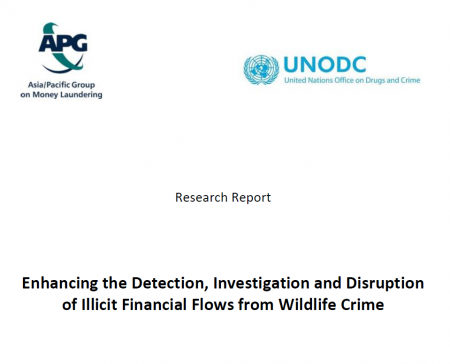Enhancing the Detection, Investigation and Disruption of Illicit Financial Flows from Wildlife Crime

“In recent years wildlife crime has grown into a significant and specialised area of transnational organised crime, driven by high demand and facilitated by a lack of effective law enforcement and low prioritisation as a serious crime, weak legislation, and non-commensurate penalties. It is a highly lucrative illicit trade, with wildlife products commanding high prices on the illicit market, and global proceeds estimated to amount to between US$7-23 billion annually.
It is well known that wildlife crime takes advantage of vulnerabilities in the legal supply chain, is enabled by corruption, fraud, and inadequate regulation, and frequently converges with other forms of serious criminality such as money laundering and counterfeiting. Some wildlife seizures can comprise multiple container loads of illegal wildlife, smuggled across long distances using complex routes and sophisticated modus operandi.
This research was initiated following the Asia/Pacific Group on Money Laundering (APG) Typologies and Capacity Building workshop which was held in Nepal in 2015, and the break-out session that focused on the financial flows from wildlife crime. From this event, it was clear that very little was known about how the proceeds from wildlife crime in the APG region moved, who was involved, how the trafficking in wildlife was financed, and what routes and methods these money movements followed.
The APG agreed to undertake a research project in partnership with UNODC, which involved a questionnaire circulated to jurisdictions to solicit data and information on financial flows from wildlife crime. The project aimed to support APG jurisdictions in combating wildlife crime and detecting, investigating and disrupting illicit financial flows, by developing recommendations and a good practices guideline on how to make better use of financial investigation, financial intelligence, and anti-money laundering techniques.” (p.5)
